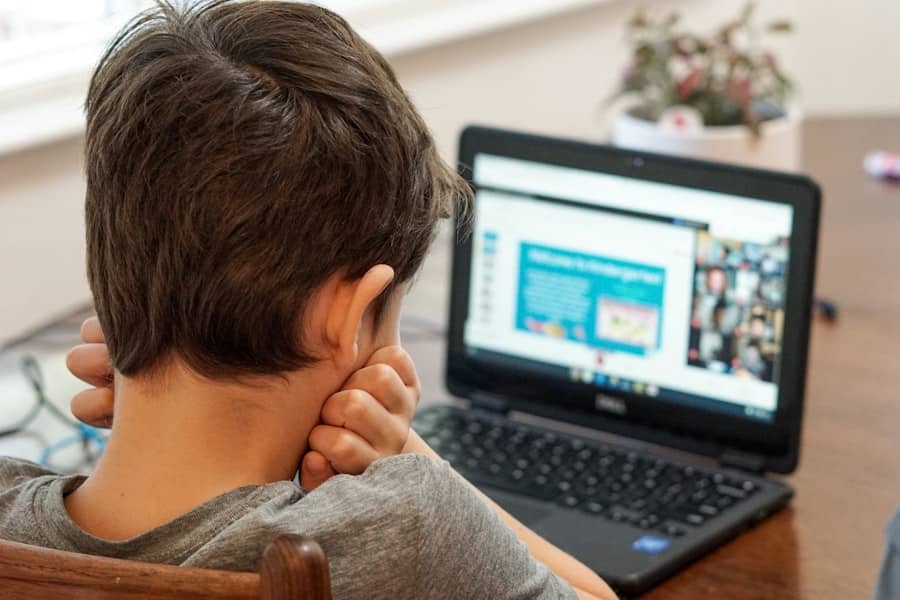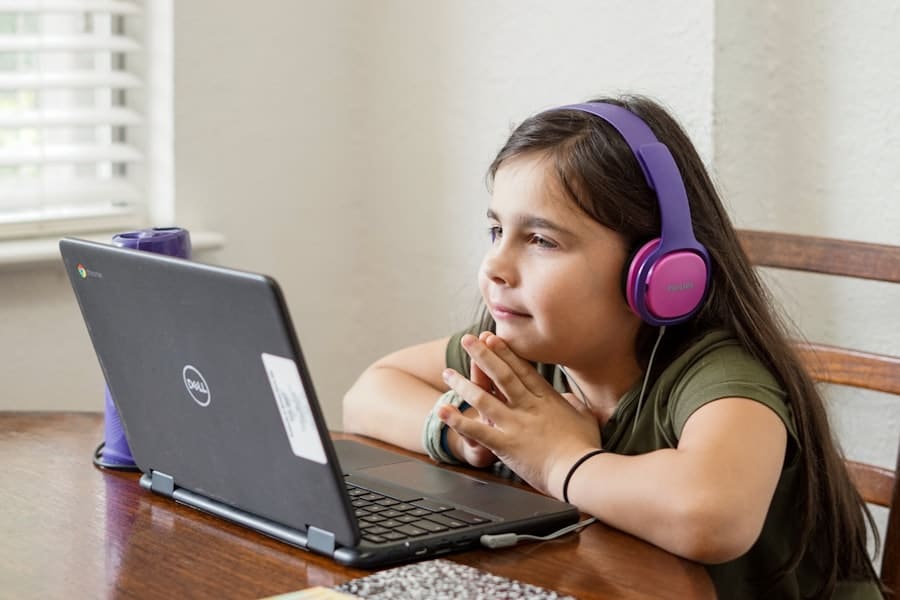The advent of educational technology (EdTech) platforms has revolutionized the way knowledge is disseminated and shared across borders. These platforms have not only made education more accessible but have also fostered a rich environment for cross-cultural exchange. By leveraging the internet and digital tools, EdTech platforms enable learners from diverse backgrounds to interact, collaborate, and share their unique perspectives.
For instance, platforms like Coursera and edX offer courses from universities around the world, allowing students to engage with content that reflects various cultural viewpoints. This exposure to different educational paradigms encourages learners to appreciate and understand cultural nuances, thereby enriching their educational experience. Moreover, EdTech platforms facilitate real-time communication and collaboration among students from different countries.
Tools such as discussion forums, video conferencing, and collaborative projects allow learners to engage in meaningful dialogues that transcend geographical boundaries. For example, a student in Brazil can work on a group project with peers in Japan and Germany, sharing insights about their respective cultures while tackling a common academic challenge. This interaction not only enhances their academic skills but also cultivates empathy and respect for diverse cultural backgrounds.
As a result, EdTech platforms serve as vital conduits for fostering global understanding and cooperation among future generations.
Key Takeaways
- EdTech platforms have a significant impact on cross-cultural exchange by connecting students from different parts of the world and facilitating global collaboration.
- Language learning apps play a crucial role in breaking down language barriers and enabling cross-cultural communication, fostering understanding and empathy among diverse communities.
- Virtual classroom collaborations provide a unique opportunity for students from different cultures to interact, share perspectives, and learn from each other, promoting cultural awareness and appreciation.
- EdTech can be leveraged to develop intercultural competence by providing resources and tools that help students understand and navigate cultural differences effectively.
- Online learning communities contribute to breaking down cultural barriers by creating a space for diverse individuals to engage in meaningful discussions and collaborative learning experiences.
The Role of Language Learning Apps in Facilitating Cross-Cultural Communication
Language learning apps have emerged as powerful tools in bridging communication gaps between cultures. Applications like Duolingo, Babbel, and Rosetta Stone provide users with the opportunity to learn new languages at their own pace, often incorporating cultural lessons alongside language instruction. This dual focus on language and culture is essential for effective cross-cultural communication.
For instance, understanding idiomatic expressions or cultural references can significantly enhance a learner’s ability to engage meaningfully with native speakers. By integrating cultural context into language learning, these apps empower users to navigate social interactions more effectively. Furthermore, language learning apps often include features that promote interaction with native speakers through conversation practice or community forums.
This direct engagement allows learners to apply their language skills in real-world contexts while simultaneously gaining insights into the cultural practices and values of others. For example, a user learning Spanish might connect with a native speaker from Mexico, discussing not only language nuances but also traditions, cuisine, and social norms. Such exchanges foster a deeper appreciation for cultural diversity and encourage learners to become more culturally competent communicators.
Virtual Classroom Collaborations: Connecting Students from Different Cultures

Virtual classrooms have become increasingly popular as educational institutions seek to create inclusive learning environments that reflect global diversity. These online settings allow students from various cultural backgrounds to collaborate on projects, participate in discussions, and share their experiences in a structured yet flexible manner. For instance, programs like ePals and Global Virtual Classroom connect classrooms across continents, enabling students to work together on joint projects that address global issues such as climate change or social justice.
This collaborative approach not only enhances academic learning but also promotes intercultural dialogue and understanding. In virtual classrooms, students are often encouraged to share their cultural heritage through presentations or discussions. This practice not only enriches the learning experience for all participants but also fosters a sense of belonging among students from different backgrounds.
For example, a student from India might present on Diwali celebrations, while a peer from Canada shares insights about Thanksgiving traditions. Such exchanges create opportunities for students to learn from one another, challenge stereotypes, and build friendships that transcend cultural boundaries. The result is a vibrant learning community where diversity is celebrated and valued.
Leveraging EdTech for Intercultural Competence Development
Intercultural competence is increasingly recognized as a critical skill in today’s interconnected world. EdTech provides various tools and resources that can help individuals develop this essential competency. Online courses focused on intercultural communication, cultural awareness, and global citizenship are now widely available on platforms like FutureLearn and LinkedIn Learning.
These courses often incorporate case studies, interactive activities, and reflective exercises that encourage learners to examine their own cultural biases while exploring the perspectives of others. Additionally, EdTech tools such as simulations and role-playing games can immerse learners in scenarios that require them to navigate cultural differences effectively. For instance, a simulation might place students in a virtual environment where they must negotiate a business deal with partners from different cultural backgrounds.
This experiential learning approach allows participants to practice their intercultural skills in a safe setting while receiving feedback on their performance. By leveraging these innovative EdTech resources, educators can equip students with the knowledge and skills necessary to thrive in diverse environments.
Breaking Down Cultural Barriers through Online Learning Communities
Online learning communities have emerged as vital spaces for breaking down cultural barriers and fostering inclusivity among learners. These communities provide platforms for individuals to connect based on shared interests or goals rather than geographical proximity. For example, forums dedicated to specific subjects or hobbies allow participants from different cultures to engage in discussions that highlight their unique perspectives while finding common ground.
This exchange of ideas can lead to greater understanding and appreciation of diverse viewpoints. Moreover, online learning communities often emphasize collaborative learning experiences that encourage participants to work together on projects or challenges. This collaborative approach not only enhances the learning process but also helps build relationships among members from different backgrounds.
For instance, a community focused on environmental sustainability might bring together students from various countries to brainstorm solutions for local ecological issues. Through these interactions, participants learn to value diverse approaches to problem-solving while developing friendships that transcend cultural divides.
The Importance of Diversity and Inclusion in EdTech Content and Resources

Diversity and inclusion are critical considerations in the development of EdTech content and resources.
For instance, textbooks and online courses that include contributions from authors of diverse backgrounds can challenge dominant narratives and present alternative viewpoints that enrich the learning experience.
This representation is essential for fostering an inclusive educational environment where all students feel valued and respected. Furthermore, inclusive EdTech resources can help combat stereotypes and misconceptions about different cultures. By presenting accurate and nuanced portrayals of various communities, educational content can promote empathy and understanding among learners.
For example, an online course about world history that includes perspectives from indigenous peoples can challenge Eurocentric narratives while providing students with a more balanced view of historical events. As educators prioritize diversity and inclusion in EdTech development, they contribute to creating a more equitable educational landscape that benefits all learners.
Fostering Global Citizenship through EdTech Initiatives
EdTech initiatives play a crucial role in fostering global citizenship among learners by promoting awareness of global issues and encouraging active participation in addressing them. Many EdTech platforms now offer courses focused on topics such as sustainable development, human rights, and social justice, empowering students to become informed global citizens who understand their responsibilities toward others.
Additionally, EdTech tools facilitate opportunities for students to engage in service-learning projects that address local or global challenges. Through virtual volunteering or collaborative projects with organizations working on social issues, learners can apply their knowledge while making a positive impact in the world. For example, students might participate in an online campaign advocating for climate action or collaborate with peers from different countries on a project aimed at promoting gender equality.
These experiences not only enhance students’ understanding of global issues but also inspire them to take action as responsible global citizens.
Overcoming Challenges and Maximizing Opportunities in Cross-Cultural EdTech Exchange
While the potential for cross-cultural exchange through EdTech is immense, several challenges must be addressed to maximize its effectiveness. One significant challenge is the digital divide; disparities in access to technology can hinder participation from marginalized communities or regions with limited internet connectivity. To overcome this barrier, stakeholders must prioritize equitable access to technology and invest in infrastructure that supports online learning initiatives globally.
Another challenge lies in ensuring that EdTech platforms are designed with cultural sensitivity in mind. Developers must be aware of the diverse needs and preferences of users from different backgrounds when creating content or features. This includes considering language accessibility, cultural relevance, and user interface design that accommodates various cultural norms.
By actively seeking feedback from diverse user groups during the development process, EdTech companies can create more inclusive products that resonate with learners worldwide. In conclusion, while challenges exist within the realm of cross-cultural EdTech exchange, the opportunities for fostering understanding and collaboration among diverse learners are vast. By leveraging technology thoughtfully and inclusively, educators can create enriching experiences that promote cross-cultural dialogue and prepare students for success in an increasingly interconnected world.
In a related article on affiliate marketing, How to Start Affiliate Marketing in 2023, the focus is on leveraging digital platforms to promote products and services across different cultures. Just like EdTech platforms enable cross-cultural exchange, affiliate marketing allows individuals to reach a global audience and connect with people from diverse backgrounds. Both strategies rely on technology to bridge cultural gaps and foster communication and understanding between people from different parts of the world.
FAQs
What is EdTech?
EdTech, short for educational technology, refers to the use of technology to facilitate learning and improve performance in an educational setting. This can include the use of digital tools, software, and platforms to enhance teaching and learning experiences.
How do EdTech platforms enable cross-cultural exchange?
EdTech platforms enable cross-cultural exchange by connecting students and educators from different cultural backgrounds through virtual classrooms, online forums, and collaborative projects. These platforms provide opportunities for communication, collaboration, and the sharing of ideas and perspectives across cultures.
What are some examples of EdTech platforms that facilitate cross-cultural exchange?
Examples of EdTech platforms that facilitate cross-cultural exchange include virtual exchange programs, language learning apps, online collaborative tools, and global learning communities. These platforms provide opportunities for students and educators to engage with peers from different cultural backgrounds and gain a deeper understanding of global issues.
What are the benefits of cross-cultural exchange through EdTech platforms?
The benefits of cross-cultural exchange through EdTech platforms include the development of intercultural communication skills, increased cultural awareness and empathy, exposure to diverse perspectives and ideas, and the opportunity to collaborate on global projects. These experiences can help prepare students for success in a globalized world.

